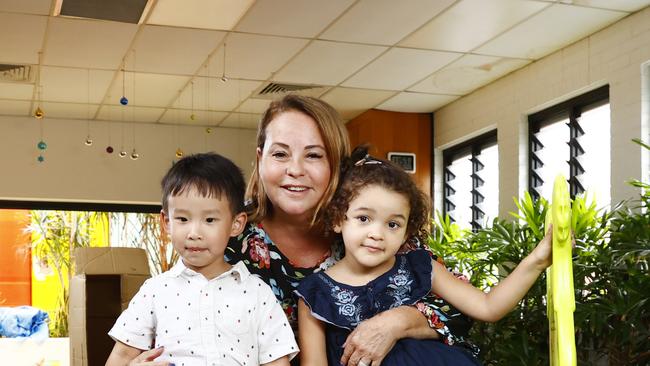The cost of childcare is racing ahead of wages and inflation: ACCC
The cost of childcare is racing ahead of wages and inflation to place further pressure on household budgets, according to the competition watchdog.

Australian family budgets have been stretched to breaking point by the accelerating cost of childcare leaping ahead of inflation and wages growth, with lower income and disadvantaged households forced to spend as much as one fifth of their disposable income on childcare services.
Some childcare services costs have leapt ahead by 32 per cent over the last four years.
And despite the cushion provided by federal government subsidies, which on July 1 were lifted, out-of-pocket expenses similarly rose strongly and in some cases raced higher faster than the current inflation rate. These out-of-pocket costs for parents increased 7 per cent for households using centre based day care services during the past four years, by 12 per cent for households using outside school hours care and 15.8 per cent for households using family day care.
The Australian Competition & Consumer Commission has released details of its latest investigations on the price and availability of childcare services, how households select childcare services and the impact of Government contributions in its interim report, published on Wednesday.
During 2022, an estimated 1.275 million children aged 5 and under and 655,000 children aged 6-13 attended a childcare service. This represented 70 per cent of all 0-5 year old children and 25 per cent of all 6-13 year old children in Australia, the ACCC said.
But for many parents the elevated costs of childcare are causing major headaches and adding to the already strong pressures on household budgets from rising interest rates, bloated mortgage repayments, rents and other cost of living expenses.
“Childcare plays a vital role in Australian society, with more than one million Australian families using childcare last year,” ACCC chair Gina Cass-Gottlieb said.
“We have spent the past six months collecting information to gain insights into what is important to families when selecting and using childcare, and what factors contribute to the price and availability of childcare in different areas.
“These are complex markets that are highly localised, with most families preferring to find childcare very close to their homes.”

The findings underline the financial pressure many parents feel at the moment as they search for affordable childcare services, with rising fees outpacing the lift in government subsidies, inflation and wages growth.
ACCC analysis confirms that childcare fees rose faster than inflation and wage growth during the past four years, rising by between 20 per cent (for centre based day care and outside school hours care) and 32 per cent (for in home care).
Government subsidies meant that actual out-of-pocket expenses for households increased at a slower rate over the same period, the report found.
The ACCC found that government subsidies offset more than half of childcare fees on average. Even so, the report found that after subsidies, out-of-pocket expenses increased 7 per cent for households using centre based day care services during the past four years, by 12 per cent for households using outside school hours care and 15.8 per cent for households using family day care.
Not surprisingly, lower income earners were most impacted by the fast growth of childcare fees and forced to devote a greater proportion of their income to paying for childcare. About half of households with the lowest incomes spend between 5 and 21 per cent of their disposable income on childcare, despite receiving a greater government contribution and paying less out-of-pocket expenses.
Half of households in the highest income bracket spend about 2 to 9 per cent of their disposable income on childcare, the ACCC report said.
“Critically, our analysis shows that the cost burden is felt most by households that are already facing disadvantage,” Ms Cass-Gottlieb said.
“Our inquiry will continue to examine why low income households are paying a greater share of their disposable income on childcare fees.”




To join the conversation, please log in. Don't have an account? Register
Join the conversation, you are commenting as Logout